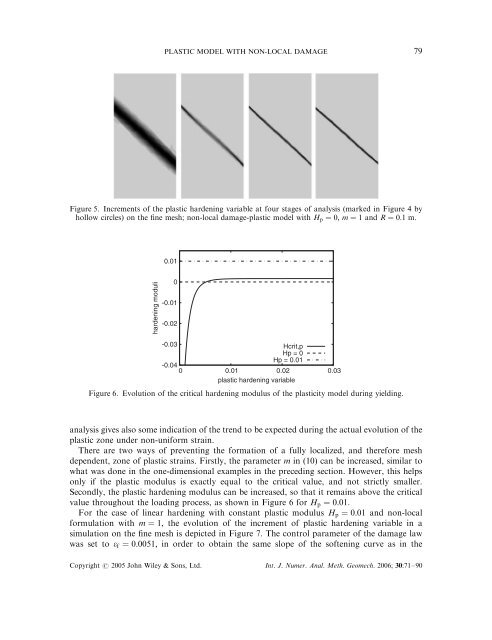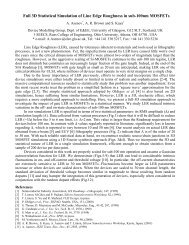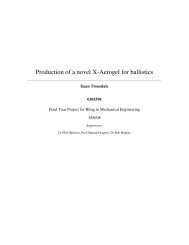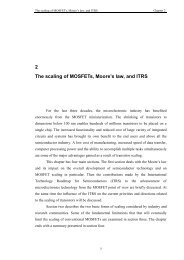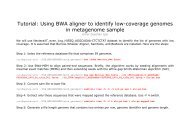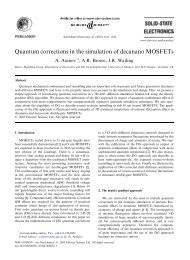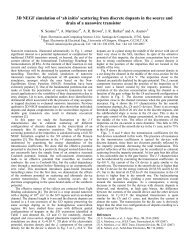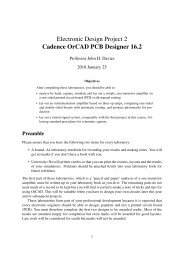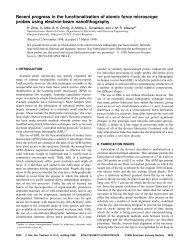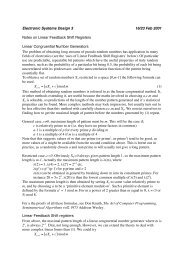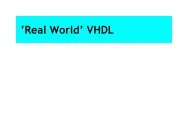Plastic model with non-local damage applied to concrete
Plastic model with non-local damage applied to concrete
Plastic model with non-local damage applied to concrete
Create successful ePaper yourself
Turn your PDF publications into a flip-book with our unique Google optimized e-Paper software.
PLASTIC MODEL WITH NON-LOCAL DAMAGE 79Figure 5. Increments of the plastic hardening variable at four stages of analysis (marked in Figure 4 byhollow circles) on the fine mesh; <strong>non</strong>-<strong>local</strong> <strong>damage</strong>-plastic <strong>model</strong> <strong>with</strong> H p ¼ 0; m ¼ 1 and R ¼ 0:1 m:0.01hardening moduli0-0.01-0.02-0.03Hcrit,pHp = 0Hp = 0.01-0.040 0.01 0.02 0.03plastic hardening variableFigure 6. Evolution of the critical hardening modulus of the plasticity <strong>model</strong> during yielding.analysis gives also some indication of the trend <strong>to</strong> be expected during the actual evolution of theplastic zone under <strong>non</strong>-uniform strain.There are two ways of preventing the formation of a fully <strong>local</strong>ized, and therefore meshdependent, zone of plastic strains. Firstly, the parameter m in (10) can be increased, similar <strong>to</strong>what was done in the one-dimensional examples in the preceding section. However, this helpsonly if the plastic modulus is exactly equal <strong>to</strong> the critical value, and not strictly smaller.Secondly, the plastic hardening modulus can be increased, so that it remains above the criticalvalue throughout the loading process, as shown in Figure 6 for H p ¼ 0:01:For the case of linear hardening <strong>with</strong> constant plastic modulus H p ¼ 0:01 and <strong>non</strong>-<strong>local</strong>formulation <strong>with</strong> m ¼ 1; the evolution of the increment of plastic hardening variable in asimulation on the fine mesh is depicted in Figure 7. The control parameter of the <strong>damage</strong> lawwas set <strong>to</strong> e f ¼ 0:0051; in order <strong>to</strong> obtain the same slope of the softening curve as in theCopyright # 2005 John Wiley & Sons, Ltd. Int. J. Numer. Anal. Meth. Geomech. 2006; 30:71–90


